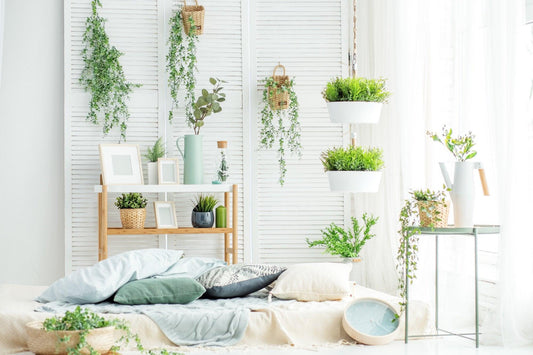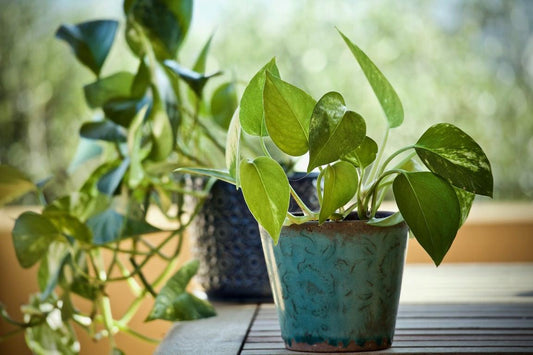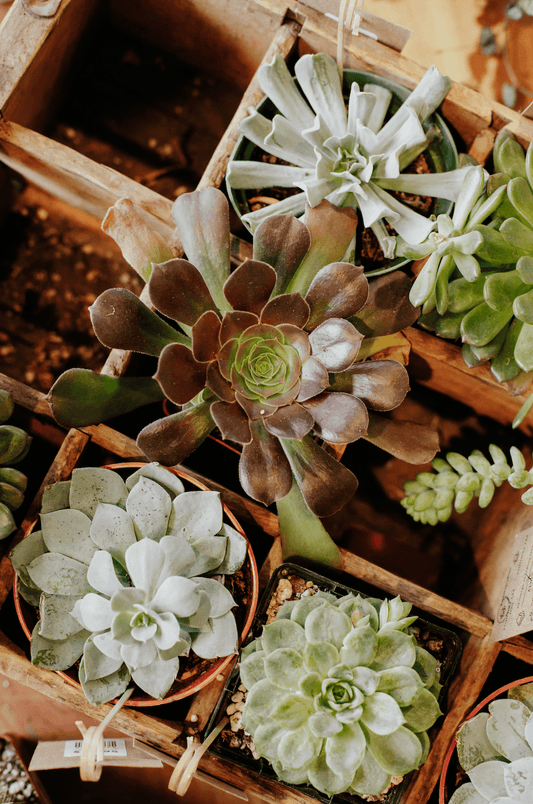Schefflera
How to Care for the Schefflera
Overview
Also known as the Umbrella Tree, and native to Taiwan, the Schefflera is a fun, lively addition to any indoor space. Characterized by its lush, umbrella-shaped leaves that droop gracefully from its sometimes braided trunk, this no-fuss plant is highly tolerant of most indoor growing conditions. In its early stages, it is likely to have 4 to 6 leaves on a single stalk. A mature Schefflera will have around 12 to 16 leaves. They produce red, white, or pink tentacle-like flowers when planted outside or in the wild, but will not usually flower in indoor conditions.
These fast growers start out at around 1 foot, and grow to 8 feet or taller, making them perfect for spaces with high ceilings. Should you want to keep your Schefflera at a manageable height, it is recommended you prune them regularly. Keep in mind not to trim more than 25% of the plant at one time, as doing so may shock it. In addition, wipe the leaves down regularly to remove dust, hard water stains, and eliminate the possibility of pests.


Profile
They can be propagated using both leaf and stem cuttings. Leaf propagation requires healthy and strong leaves with the petiole still intact. Place the leaf cutting 1cm in soil and wait for it to take root. Stem propagation requires a 4-6 inch cutting with a node. Place the stem into well-draining potting mix and create a greenhouse environment by putting a clear plastic bag over it, using a clear tupperware container with the lid slanted, or other method.
Scheffleras also act as a natural detoxifier, absorbing pollutants from the air. It is worth noting that this plant is toxic to both humans and animals because its sap contains calcium oxalate crystals, which can cause minor skin irritation. Keep it away from your pets, as accidental ingestion will cause excess drooling and vomiting.




Low light
Scheffleras don’t need a lot of special care to thrive indoors. They can survive lower light conditions, but prefer bright indirect light. They prefer temperatures between 60-80 degrees Fahrenheit; avoid anything below this bracket as colder temperatures may shock your Schefflera. Make sure to rotate your plant to even out the growth, and to keep the leaves lush and full.

Occasional
They do best in humid, greenhouse-type environments. Mist often, or use a humidifier. Water using filtered water when the top 75% of the soil is dry. Repotting should be done when the roots of the plant start crowding in order to avoid it becoming root bound. Make sure to choose a pot 1-2 inches wider than the previous one when repotting. To repot successfully, soak the entire root ball in water and carefully untangle the roots, pruning overgrowth to ensure it fits. Note that repotting may shock the plant a bit as its roots have been disturbed. After repotting, keep soil moist and do not move it for several weeks to let it adjust to it’s new environment.

Easy breezy
FREQUENTLY ASKED QUESTIONS (FAQs)
on Schefflera
What is the sticky substance on my Schefflera?
This is likely honeydew deposits from several types of pests that feed on the sap. You can wash it off and get rid of any visible bugs, but those left behind can cause the same problem. Try taking your plant outside or in the bathtub, and spraying the leaves with water with the goal of knocking any pests off of the plant. Make sure to follow up using this method at any sign of new pests. We recommend using PureCrop1, which is formulated to eliminate insects upon contact without harming the plant after thoroughly rinsing your plant with water.
Why are my Schefflera leaves turning black?
Black leaves are a telltale sign of cold damage. Schefflera do best in relatively higher temperatures; the easiest way to prevent this is to avoid exposing them to cold drafts, and make sure they are properly packaged should you need to travel with them during the colder months. Should cold damage occur, simply prune the damaged leaves to keep the rest of the plant healthy.
Can I use hard water for my Schefflera?
This is unadvisable, as tap water contains a high level of minerals such as calcium and magnesium that may harm your plant. Such minerals can build an obstructive layer in the soil, clogging it and hindering airflow. You may use tap water left out overnight for at least 24 hours, as this will allow chlorine and other harmful chemicals to dissipate before use.




